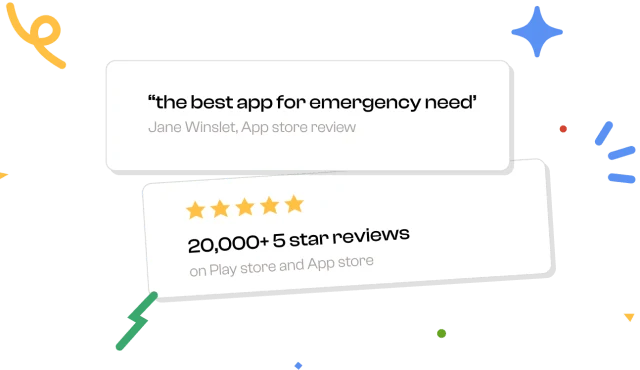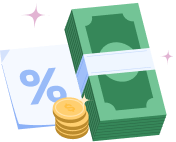Personal loans have become a popular choice for individuals seeking financial assistance in America. According to recent statistics, the outstanding personal loan debt in the United States reached a staggering $160 billion in 2021. This article will discuss what it means to have a personal loan and how to refinance a personal loan.
What does it mean to refinance personal loans?
When we talk about how to refinance a personal loan, it involves replacing your existing loan with a new loan, typically from a different lender or with the same in some cases. Refinancing aims to obtain better loan terms, such as lower interest rates, extended repayment periods, or more favorable conditions.
By refinancing, borrowers aim to improve their financial situation. They do this by reducing their monthly payments, saving on interest expenses, or simplifying their debt management. Refinancing does not eliminate the debt itself. Instead, it modifies the loan terms to make it more advantageous for the borrower.
Can I refinance a personal loan?
If you want to get better or lower interest rates on your loan, you can refinance it. For this, you need to meet specific criteria. Lenders sometimes consider factors like your credit score, income statement, and income debt ratio when assessing your eligibility for refinancing personal loans.
It is necessary to have a good credit score or positive repayment history to increase your chances. If there is an additional remark on your credit score, if it has been improved or increased, if your financial condition has been increased, or if you have decreased your other debts, it improves your chances of getting another loan or refinancing your personal loan.
Beem can help you find, compare options and choose the best personal loan to meet your needs.
Perks of refinancing your personal loan
- Better interest rates: Refinancing your loan offers lower interest rates, reducing overall interest expenses.
- Monthly payment reduction: Securing a loan with a lower interest rate or extending the repayment term can lower your monthly installment amount.
- Improved credit score: Consistent timely payments on your refinanced loan can positively impact your credit score, strengthening your financial profile.
- Debt consolidation: Refinancing allows you to consolidate multiple high-interest debts into a single loan, simplifying your repayment process.
- Payment stability: If you are switching from a variable rate to a fixed rate, it gives you payment stability.
How to refinance a personal loan?
Sometimes it is a lengthy process to refinance personal loans as it considers your credit score and payments of other debts. Let’s break down how to refinance a personal loan.
- Evaluate the amount you need: Before applying to refinance personal loans, check the amount you want to pay off your existing loan. Also, discuss the prepayment penalties that the original lender may charge.
- Review your current loan terms: Understand the terms and conditions of your existing loan, including the interest rate, repayment period, and any prepayment penalties.
- Research and compare lenders: Explore multiple lenders to find the best rates and loan terms that suit your needs. Consider online lenders, credit unions, or traditional banks.
- Check your credit score: Obtain a free copy of your credit report and ensure it is accurate. Take steps to improve your credit score if necessary.
- Gather necessary documents: Prepare your necessary documents, such as identification, income documents, and proof of existing loan, to streamline the refinancing process.
- Submit applications: Apply to multiple lenders, carefully comparing their offers to select the most favorable one. Carefully look at the interest rates and other occurring rates at the time of payment.
- Close the new loan: Once approved, review the terms and conditions of the new loan, sign the agreement, and proceed with closing the loan.
- Repay the old loan: Use the funds from the new loan to pay off the existing loan completely. This should be done as soon as possible to avoid unnecessary interest charges on existing loans.
How refinancing a personal loan helps
Refinancing a personal loan can offer several benefits that can help improve your financial situation. Here are some ways in which refinancing can be advantageous:
- Lower interest rates: One of the primary benefits of refinancing is the potential to secure a loan with a lower interest rate. With a reduced interest rate, you can save money on interest expenses over the life of the loan, ultimately lowering the total cost of borrowing.
- Reduced monthly payments: Refinancing to a loan with a lower interest rate or extending the repayment term can lower your monthly installment amount. This can free up your cash flow, making it easier to manage your monthly budget and provide room for savings or other financial obligations.
- Consolidation of debt: Refinancing allows you to consolidate multiple high-interest debts into a single loan. Combining your debts simplifies repayment and secures a lower overall interest rate. This can make managing your debt more accessible and save money on interest payments.
- Improved credit score: Making consistent, on-time payments on your refinanced loan can positively impact your credit score. As you pay off your debts responsibly, your creditworthiness improves, which can open up future opportunities for better loan terms and access to credit.
- Change in loan terms: Refinancing provides an opportunity to modify the terms of your loan. You can choose a shorter or longer repayment period based on your financial goals and capabilities. Shortening the loan term can help you repay the loan faster while extending the time can reduce your monthly payments.
- Access to additional funds: Refinancing allows you to tap into the equity of an asset, such as your home or car, and access additional funds. This can be useful for major expenses like home renovations, education costs, or debt consolidation.
- Simplified financial management: By refinancing, you consolidate your debts into a single loan, simplifying your financial management. Instead of juggling multiple payments and due dates, you have only one monthly payment to focus on, reducing the risk of missed charges and late fees.
Conclusion
Learning how to refinance a personal loan can be a strategic move to improve your financial well-being. By securing better loan terms, you can save money on interest, reduce your monthly payments, and simplify your debt management. Research, compare lenders, check your credit score, and review loan offers while exploring how to refinance a personal loan.
Beem’s personal loan feature can help you zero in on the kind of loan that suits your requirements best and helps you sail through a financial crunch.






























